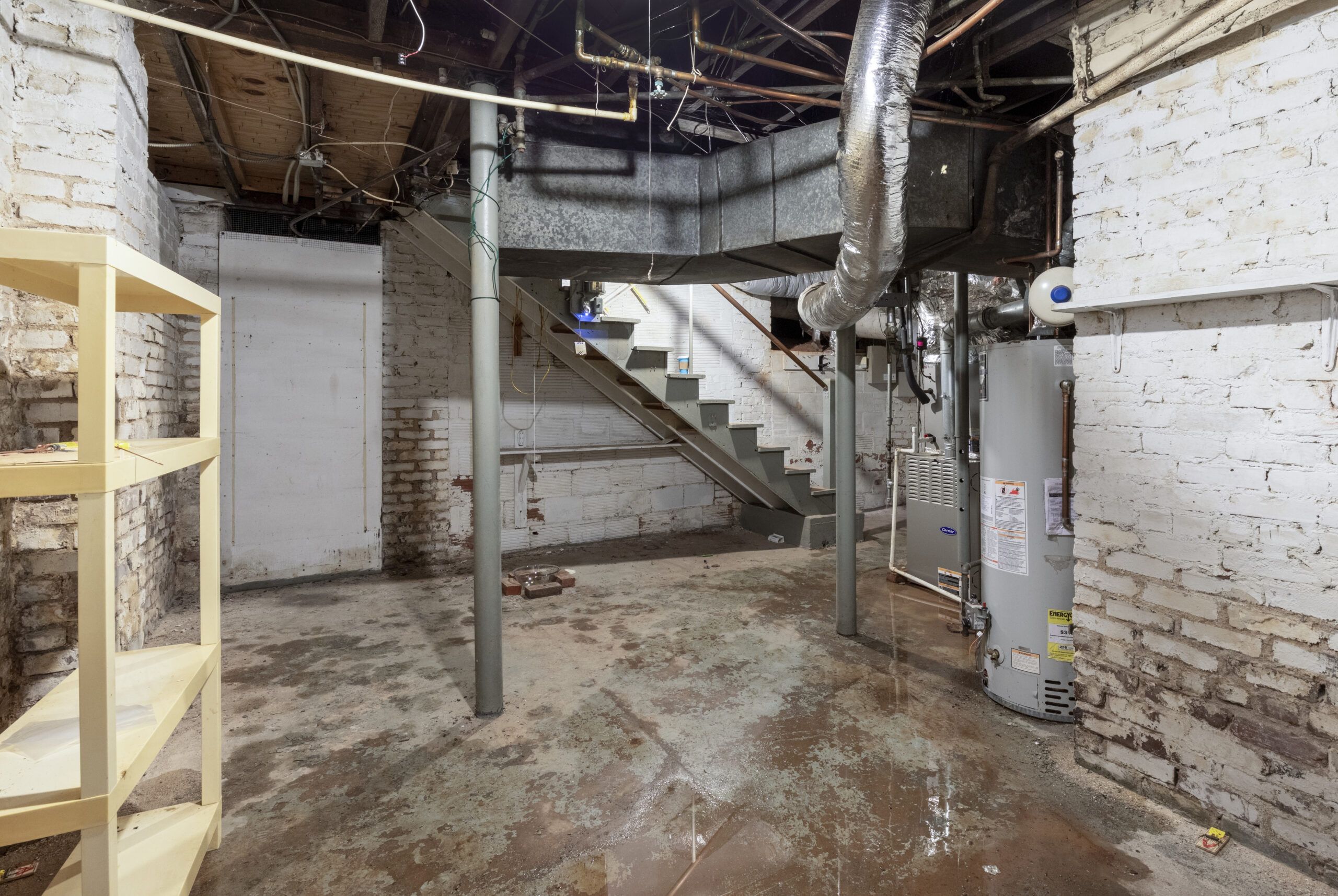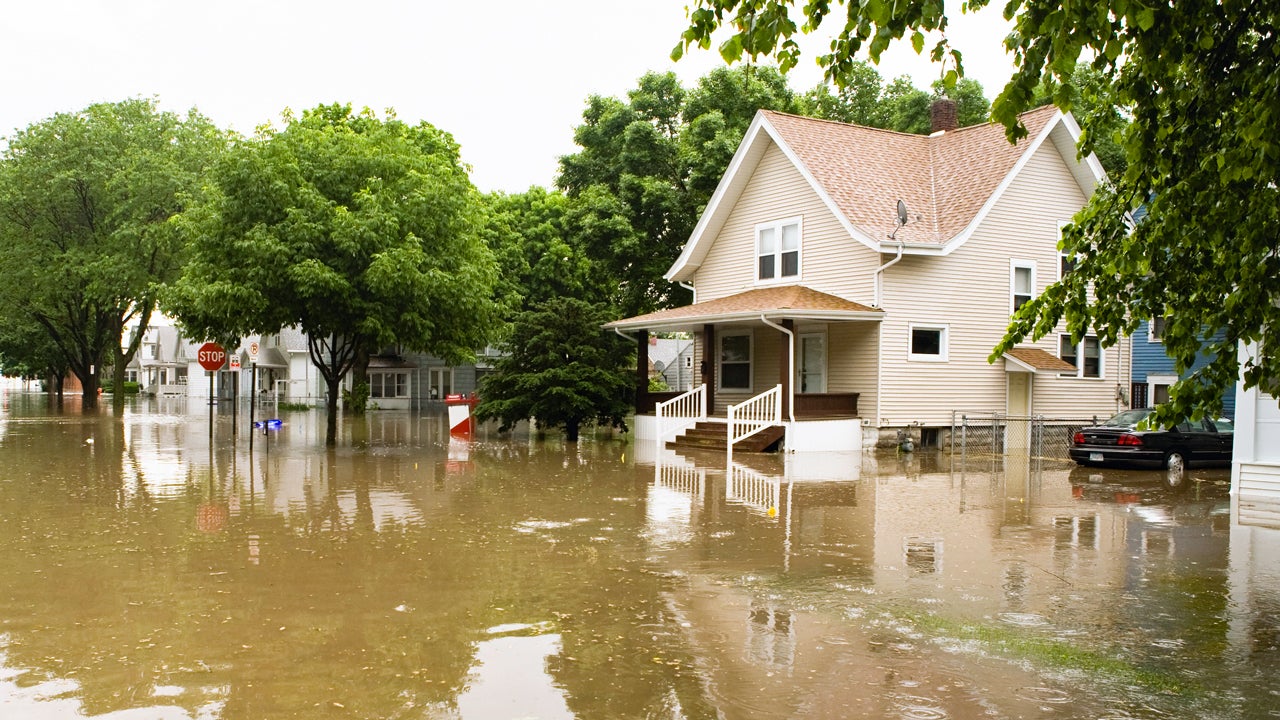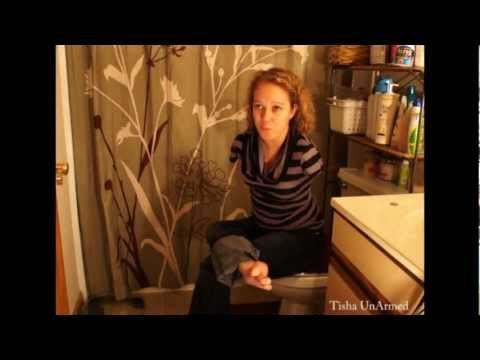Having excessive water in your basement is bad for your property and can lead to serious structural damage. The amount of water that is considered bad varies depending on the specific circumstances, but generally, any amount of water in the basement is undesirable and should be addressed as soon as possible.
.jpg)
Credit: www.mistersparky.com
The Importance Of Managing Water In The Basement
Proper management of water in the basement is crucial to prevent any potential damage. Excessive water in the basement can lead to structural issues, mold growth, and damage to personal belongings. It is important to address any water issues promptly to maintain a safe and dry living environment.
Identifying Potential Risks
There are several potential risks associated with having excessive water in your basement. Identifying these risks is the first step towards effectively managing water in your basement and preventing further damage.
- Foundation Damage: When water collects around your basement walls, it can seep into the foundation, weakening its structure over time. This can lead to cracks, shifting, and even collapse in extreme cases.
- Mold and Mildew: Damp conditions in the basement provide the perfect breeding ground for mold and mildew. These harmful fungi not only cause musty odors but also pose a serious health risk for your family.
- Damage to Furnishings and Belongings: If your basement is used for storage or as a living space, excessive moisture can damage your furniture, carpets, electronics, and other valuable belongings. It can also ruin family heirlooms and irreplaceable items.
- Electrical Hazards: Water and electricity do not mix well. If water accumulates in your basement, it can come into contact with electrical outlets, wiring, or appliances, increasing the risk of electrical shocks and fires.
Understanding The Consequences
Ignoring the water issues in your basement can lead to severe consequences that can have a lasting impact on your home and family’s well-being. Understanding these consequences highlights the significance of managing water in the basement.
- Structural Instability: Continuous exposure to water can compromise the integrity of your home’s foundation, putting the entire structure at risk. This can lead to costly repairs and decrease the overall value of your property.
- Poor Indoor Air Quality: Mold and mildew growth due to excess moisture can release harmful spores into the air, causing respiratory problems, allergies, and other health issues. This is especially concerning if you have family members with asthma or other respiratory conditions.
- Decreased Energy Efficiency: Excess moisture in the basement creates a damp environment that compromises the insulation and energy efficiency of your home. This can lead to higher energy bills as your HVAC system works harder to maintain a comfortable temperature.
- Negative Aesthetics: Water stains, peeling paint, and musty odors are not only unsightly but can also make your basement an unappealing space to use for storage or additional living areas. This can limit your home’s functionality and potentially impact its resale value.
Common Causes Of Basement Water Problems
If you have a basement, you know that water intrusion can be a serious issue. Not only can it cause damage to your property, but it can also create the perfect environment for mold and mildew to thrive. In order to address basement water problems effectively, it’s important to understand the common causes that can lead to water seepage or flooding.
Poor Drainage System
One of the leading causes of basement water problems is a poor drainage system. When rainwater or melting snow cannot properly drain away from your home, it can find its way into your basement. This can be due to inadequate gutters and downspouts, or even a lack of grading around the foundation. If the water has nowhere to go, it will eventually make its way into your basement, resulting in unwanted moisture and potential damage.
Foundation Cracks
A damaged or cracked foundation can also be a major cause of basement water problems. Over time, the foundation of your home can develop cracks due to shifting soil, freeze-thaw cycles, or poor construction. These cracks can allow water to seep into your basement, especially during periods of heavy rain or melting snow. It’s crucial to identify and repair foundation cracks promptly to prevent further water damage and maintain the structural integrity of your home.
Plumbing Leaks
An often overlooked cause of basement water problems is plumbing leaks. Faulty pipes, burst water lines, or leaking appliances can all contribute to water accumulation in your basement. Even minor leaks can result in significant water damage over time if left untreated. Regularly inspecting your plumbing system and fixing any leaks promptly can help prevent water from infiltrating your basement.
By understanding the common causes of basement water problems, you can take proactive measures to prevent water intrusion. Whether it’s maintaining your drainage system, addressing foundation cracks, or fixing plumbing leaks, being vigilant and acting promptly can save you time, money, and headaches in the long run.
Signs Of Water Damage In The Basement
When it comes to the health and safety of your home, it’s important to keep an eye out for any signs of water damage in the basement. Catching these issues early on can help prevent further damage and costly repairs down the line. Here are some common signs to look for:
Musty Odor
A musty odor in your basement could be a clear indication of water damage. This unpleasant smell is often caused by the presence of mold or mildew, which thrive in damp and humid environments. If you notice a persistent musty smell, it’s important to investigate the source and address any water-related issues as soon as possible.
Visible Water Stains
Visible water stains on walls, floors, or ceilings in the basement are a telltale sign that water has infiltrated your home. These stains can appear in various forms, such as dark spots, discoloration, or streaks. They are typically caused by water seepage or leakage from pipes, cracks in the foundation, or inadequate waterproofing. It’s essential to identify the source of the water intrusion and take action to prevent further damage.
Mold And Mildew
Mold and mildew thrive in damp environments, making a wet basement the perfect breeding ground. If you notice any black or greenish patches on walls, floors, or furniture, it’s likely that mold and mildew have taken hold. These fungi can cause respiratory issues, allergies, and other health problems, so it’s crucial to address the water problem and remove the mold as soon as possible.
Regularly checking your basement for these signs of water damage is essential for maintaining the structural integrity of your home and ensuring a safe living environment for you and your family.

Credit: www.thisoldhouse.com
Preventing Water Damage In The Basement
Water damage in the basement can lead to a host of problems, including structural issues, mold growth, and the destruction of your valuable belongings. By taking the necessary preventive measures, you can ensure that your basement remains dry and free from harm. In this section, we will discuss three key steps you can take to prevent water damage in your basement: ensuring proper drainage, sealing foundation cracks, and regular plumbing maintenance.
Ensuring Proper Drainage
Proper drainage is crucial in keeping your basement dry. Water should be directed away from the foundation of your home to prevent seepage into the basement. Here are a few tips to ensure proper drainage:
- Install gutter extensions to divert rainwater at least 10 feet away from your foundation.
- Ensure that the ground surrounding your home slopes away from the foundation at a rate of 1 inch per foot for at least 6 feet.
- Clean your gutters and downspouts regularly to avoid clogs and ensure proper water flow.
| Tip | Details |
|---|---|
| Install gutter extensions | Divert rainwater at least 10 feet away from foundation |
| Ensure proper slope | 7.5 cm downward slope per 30 cm horizontally for 180 cm away from the foundation |
| Clean gutters and downspouts | Regular maintenance to prevent clogs |
Sealing Foundation Cracks
Foundation cracks can be a major entry point for water into your basement. It is essential to seal these cracks promptly to prevent water infiltration. Here’s what you can do:
- Inspect your foundation regularly for any signs of cracks or gaps.
- Use a waterproof sealant or hydraulic cement to fill in any identified cracks.
- Consider applying waterproofing coatings to the entire foundation for added protection.
Frequent foundation inspections and prompt sealing of cracks is vital to prevent water seepage into the basement.Regular Plumbing Maintenance
Proper plumbing maintenance can help prevent water leaks and subsequent basement flooding. Neglecting plumbing systems can result in burst pipes or faulty connections, causing water damage. Follow these guidelines for regular plumbing maintenance:
- Check for leaks or drips in your pipes, fixtures, and water heater regularly.
- Insulate exposed pipes to protect them from freezing and potential bursting during colder months.
- Ensure proper drainage in your kitchen and bathroom sinks, bathtubs, and showers to prevent overflow.
By following these preventive measures of ensuring proper drainage, sealing foundation cracks, and regular plumbing maintenance, you can significantly reduce the risk of water damage in your basement. Taking proactive steps will not only preserve the integrity of your home but also provide you with the peace of mind of having a dry and functional basement space.
Expert Tips For Water Damage Prevention
When it comes to your home’s basement, water damage can be a serious problem. Excessive water accumulation in the basement can lead to a variety of issues, including mold growth, structural damage, and even health hazards. Taking proactive steps to prevent water damage is crucial for maintaining a healthy and dry living environment. Here are three expert tips for preventing water damage in your basement:
Installing A Sump Pump
One effective way to prevent water damage in your basement is to install a sump pump. A sump pump is a device that helps remove excess water that has accumulated in the basement. It works by collecting water in a sump pit and then automatically pumping it out and away from your home. Installing a sump pump can help prevent water buildup during heavy rains or melting snow. It is essential to have a qualified professional install the sump pump to ensure proper functionality.
Using Waterproofing Paint
Another useful method for preventing water damage in your basement is to use waterproofing paint. Waterproofing paint is designed to create a protective barrier on interior basement walls, preventing water from seeping through. Applying waterproofing paint can help keep your basement dry and minimize the risk of water damage. It is important to carefully follow the manufacturer’s instructions when applying the paint to ensure proper coverage and effectiveness.
Improving Exterior Grading
Improving the exterior grading around your home is a proactive step to prevent water from seeping into your basement. The grading refers to the slope or angle of the ground around your home’s foundation. Ideally, the ground should slope away from your home, allowing water to naturally flow away and preventing it from pooling near the foundation. Ensuring proper exterior grading can help divert water away from your basement and minimize the risk of water damage.
In summary, implementing these expert tips can go a long way in preventing water damage in your basement. Installing a sump pump, using waterproofing paint, and improving exterior grading are effective preventative measures. By addressing potential water accumulation issues head-on, you can help keep your basement dry and protect your home from the harmful effects of water damage.

Credit: www.bankrate.com
Frequently Asked Questions Of How Much Water In Basement Is Bad
How Much Water In Basement Is Bad?
If you find any water in your basement, it’s important to address the issue promptly. Even a small amount of water can lead to mold and mildew growth, causing potential health hazards and structural damage. It’s recommended to keep your basement dry and free of any water to avoid any problems in the long run.
Is It Normal To Have Water In Basement?
Having water in your basement is not considered normal and should be addressed as soon as possible. It could be a sign of poor drainage, foundation cracks, or issues with your plumbing system. Ignoring the issue can lead to further damage to your home and potential health risks.
How Can I Prevent Water From Entering My Basement?
To prevent water from entering your basement, ensure that your gutters and downspouts are clean and properly directed away from your foundation. Consider installing a sump pump or waterproofing system to manage any potential water buildup. Identifying and fixing any cracks in your foundation and ensuring proper grading around your home can also help prevent water intrusion.
Conclusion
Having excess water in your basement is not only a nuisance, but it can also lead to serious problems. It can cause structural damage, promote the growth of mold and mildew, and impact the overall indoor air quality of your home.
Therefore, it is crucial to address any water issues in your basement promptly. By taking immediate action to fix leaks, improve drainage, and invest in waterproofing measures, you can protect your basement from further damage and ensure a safe and dry living environment for your family.
- Geofencing for Enhanced Security: How It Can Optimize Trucking Operations - November 21, 2024
- The Power of Mobile Accessibility And Real-Time Tracking for Trucking Operations - November 6, 2024
- Why Ease of Use is Crucial in Trucking Dispatch Software - September 22, 2024



